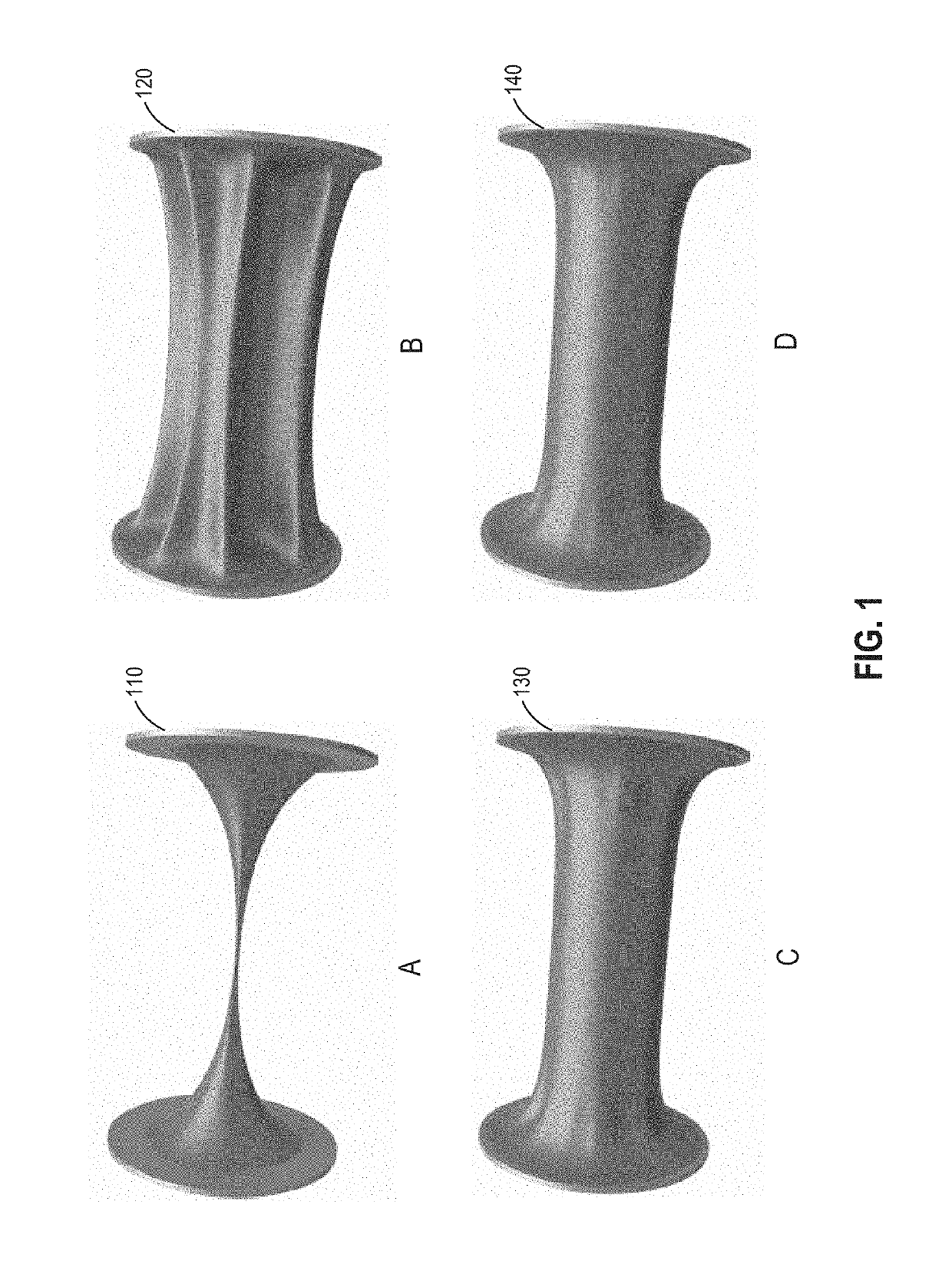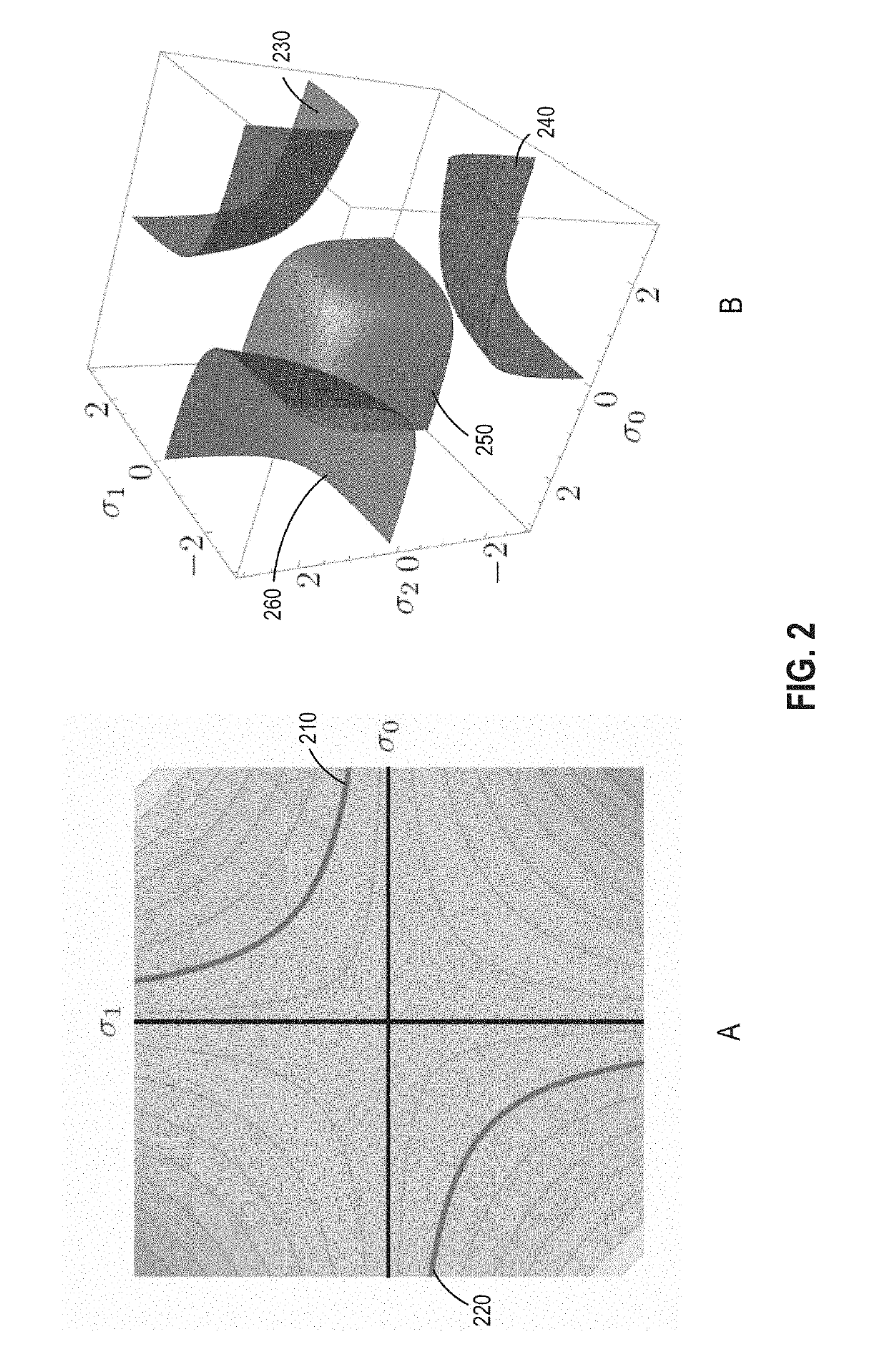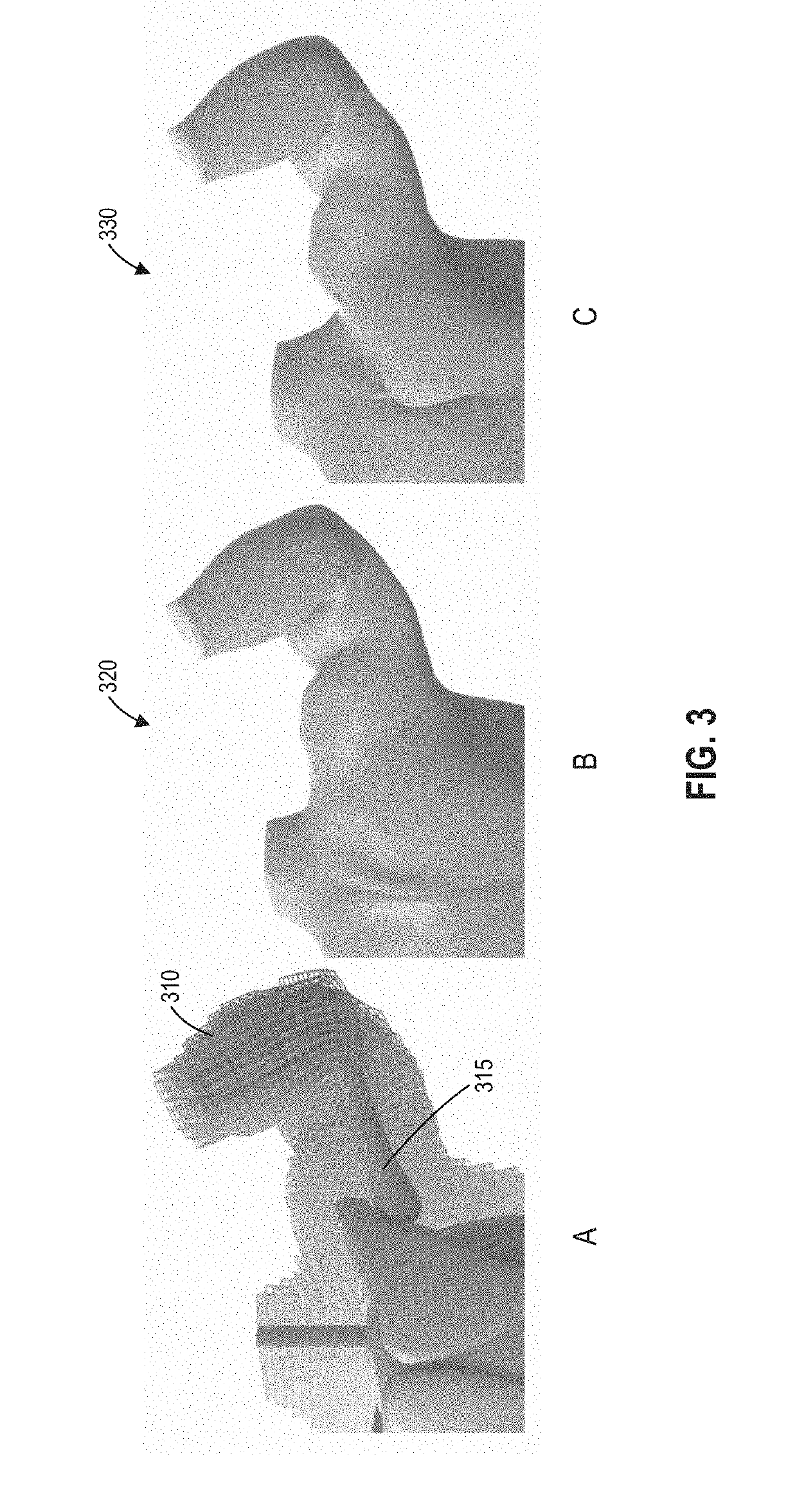Stable neo-hookean flesh simulation
- Summary
- Abstract
- Description
- Claims
- Application Information
AI Technical Summary
Benefits of technology
Problems solved by technology
Method used
Image
Examples
Embodiment Construction
[0014]Non-linear hyperelastic elastic energies have been used in flesh simulations to model the deformations of biological tissues, such as muscle and fat in virtual characters (e.g., virtual humans). Various extensions of Hooke's law, F=kx, to three dimensions have been used as elastic energy models, including the co-rotational and Neo-Hookean energy models. However, biological tissues require volume preservation, which is reflected in their high Poisson's ratios μ∈[0.45,0.5) and corresponding visual features that emerge. Traditional elastic energy models such as the co-rotational model do not preserve volume well. Neo-Hookean energy models do preserve volume but contain singularities at which simulations using such models become numerically intractable. As used herein, a “singularity” in an energy model refers to a point where one or more terms of the energy model, and therefore the energy model itself, becomes infinite (either positive or negative). Clamping parameters have been ...
PUM
 Login to View More
Login to View More Abstract
Description
Claims
Application Information
 Login to View More
Login to View More - R&D
- Intellectual Property
- Life Sciences
- Materials
- Tech Scout
- Unparalleled Data Quality
- Higher Quality Content
- 60% Fewer Hallucinations
Browse by: Latest US Patents, China's latest patents, Technical Efficacy Thesaurus, Application Domain, Technology Topic, Popular Technical Reports.
© 2025 PatSnap. All rights reserved.Legal|Privacy policy|Modern Slavery Act Transparency Statement|Sitemap|About US| Contact US: help@patsnap.com



